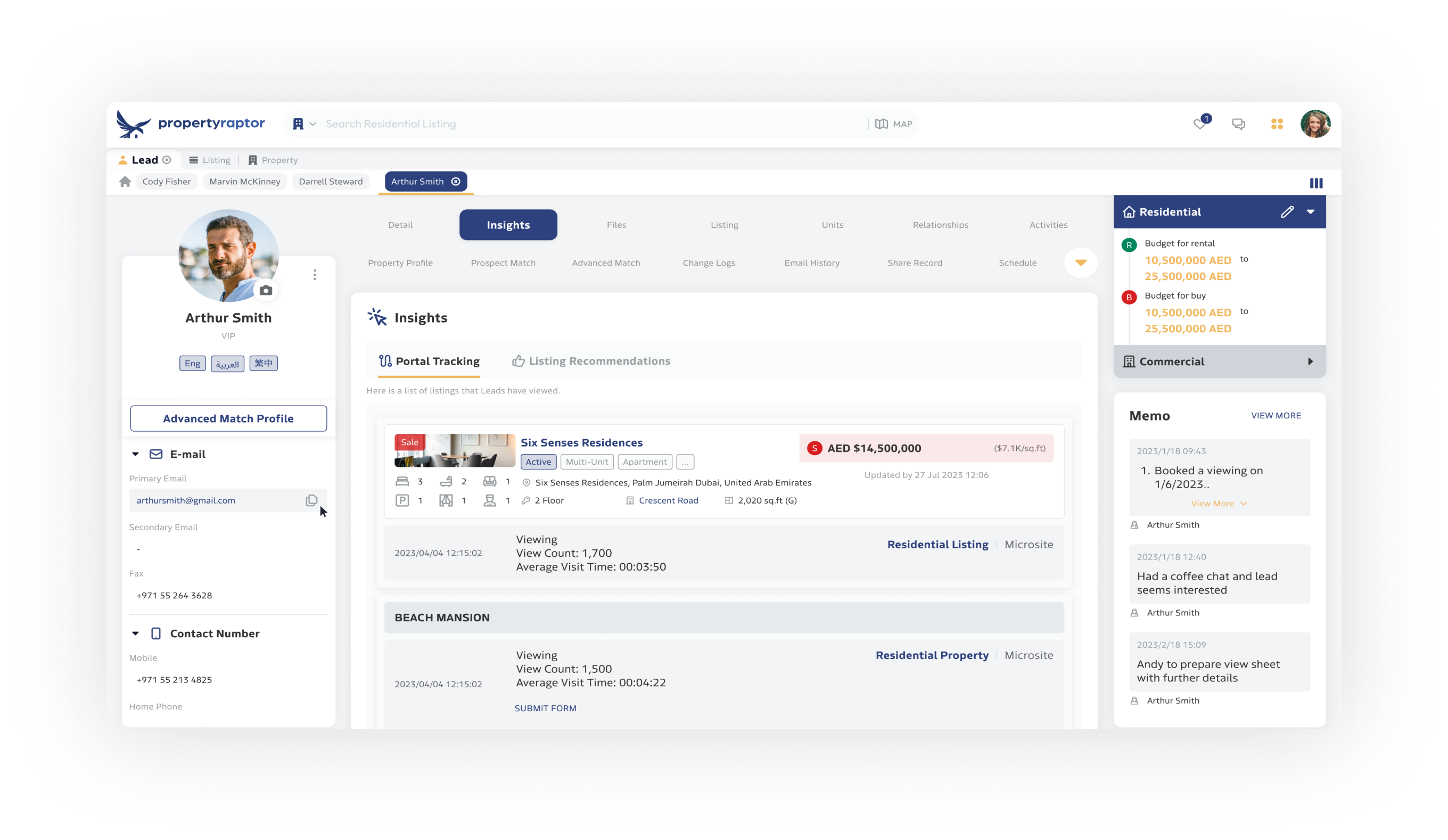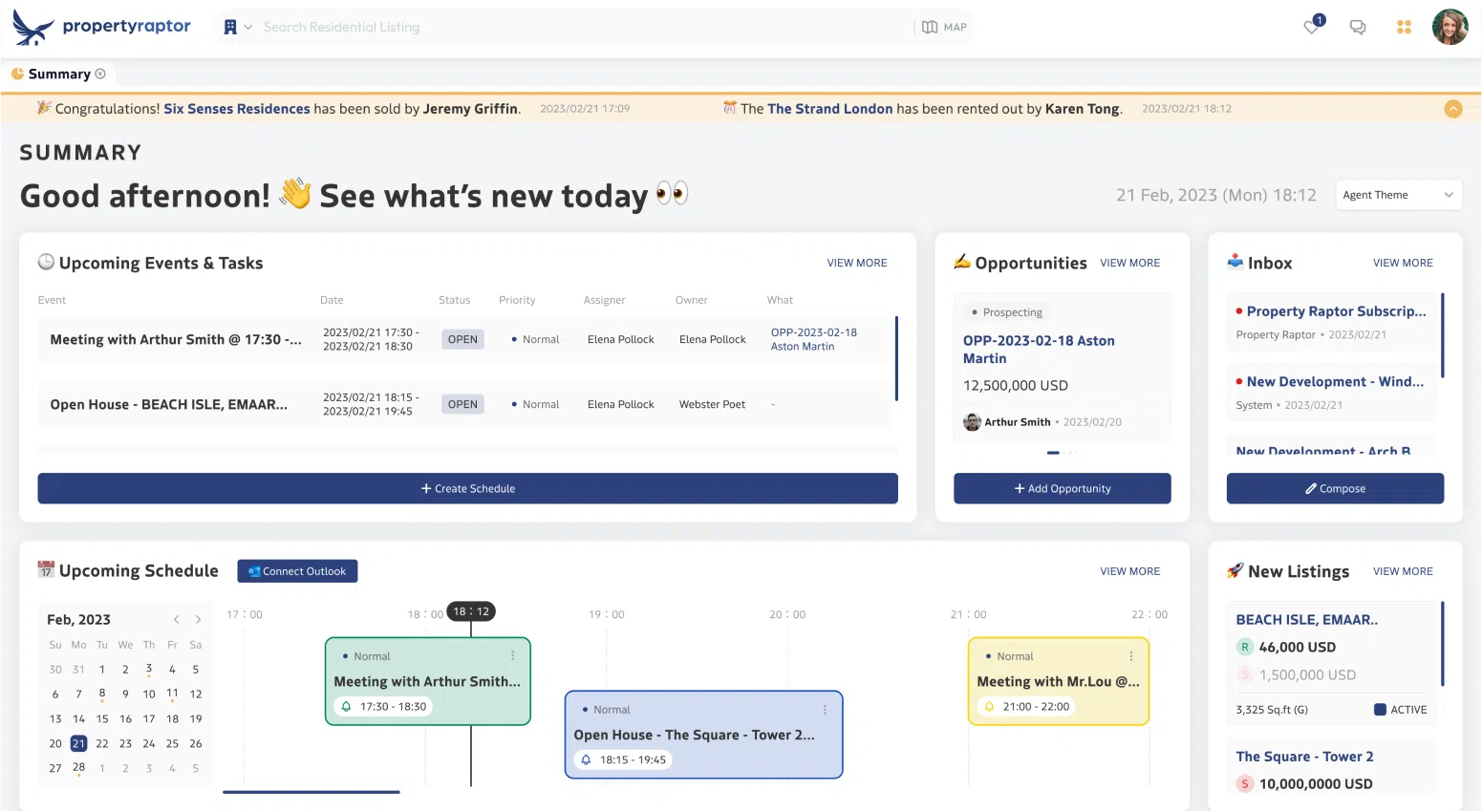
To fully capitalize on a CRM, agencies should follow best practices when implementing and using it. In this article, we’ll share strategies for boosting productivity and sales using agency CRMs and explore ways to improve conversion rates through effective software utilization.
Key Takeaways:
- CRM systems are crucial for agencies looking to streamline operations and enhance customer service, productivity, workflows, and sales.
- Picking the right CRM platform is vital for optimizing operations and improving sales performance.
- Creating buyer personas and segmenting the audience are essential steps for crafting targeted marketing strategies and efficiently managing audience segments.
- Lead nurturing campaigns play a vital role in keeping potential customers engaged, shortening the sales cycle, and driving business growth.
Best Practices for Getting Started with an Agency CRM

Show an image of a well-organized, sleek digital dashboard of an Agency CRM with various productivity and sales boosting features clearly highlighted.” –v 5.1 –ar 16:9
A powerful Customer Relationship Management (CRM) system can be a game-changer for agencies, greatly boosting sales and productivity. The success of your agency is closely tied to carefully choosing the right CRM platform, setting clear goals and objectives, building a comprehensive customer database, and crafting a detailed buyer persona to enable effective audience segmentation.
Moreover, outlining well-defined sales processes and workflows is crucial to streamline operations, ensuring the efficient use of resources while fostering the highest levels of client satisfaction.
Choose the Right Platform
Choosing the right CRM platform is a pivotal move to enhance business operations, improve sales performance, and increase productivity. A fitting CRM system can serve as a central hub for handling interactions with customers and potential clients. It brings advantages like streamlining sales procedures, optimizing the sales pipeline, offering training and coaching to teams, monitoring performance metrics, maintaining the CRM system, and integrating customer feedback.
Comparison of CRM Platforms:
Imagine evaluating different CRM platforms to find the best fit. Here’s a simplified comparison of hypothetical CRM systems (CRM A, B, C) based on their capabilities in sales process standardization, sales pipeline optimization, and team training & coaching:
| Sales Process Standardization | Sales Pipeline Optimization | Team Training & Coaching | |
|---|---|---|---|
| CRM A | High | Medium | Low |
| CRM B | Medium | High | Medium |
| CRM C | Low | Low | High |
When picking a CRM platform, agencies should focus on what’s most important to them. Think about things like how easy it is to use and how well it integrates with your current systems. The ultimate aim is to boost sales and productivity by improving how you manage customer relationships. This approach simplifies the language and gives you a structured way to compare CRM platforms.
Establish Clear Goals and Objectives
To select the right CRM, it’s crucial to set clear goals and objectives. This step provides a structured path and establishes measurable benchmarks for success. These objectives should not only align with your broader business goals but also address the specific needs of your sales teams.
For instance, one goal might be to streamline the sales process, making it more efficient and less time-consuming. This could involve automating tasks or enhancing customer engagement throughout the sales journey. Another objective could be about improving visibility into the sales cycle, enabling more accurate forecasting and better strategic decision-making.
Furthermore, well-defined CRM objectives don’t just boost productivity; they also enhance the entire customer journey. They ensure consistent interactions at every stage of your business processes. Knowing the expected outcomes from using a CRM system will help identify the most crucial features, like reporting analytics or mobile access capabilities for supporting remote workforces.
In the end, this approach increases the likelihood of achieving these objectives while staying in line with your broader sales strategy.
Set Up a Customer Database
Building an efficient customer database is the foundation of your agency’s CRM system, offering a complete view of each customer’s profile. To do this, you’ll want to include custom fields that address your client’s unique requirements.
When designing these custom fields, it’s important to consider the user experience. They should be intuitive and straightforward, providing valuable information about each customer without overwhelming your team.
This customized CRM system simplifies the process for your sales teams. It allows them to track patterns, predict behaviours, and make informed decisions, ultimately boosting productivity. Furthermore, it empowers your business to tailor its services or products to meet your client’s specific needs, thereby improving customer relationships through more personalized experiences.
By creating detailed customer profiles within a robust CRM system, agencies gain all the necessary tools to better understand their clients and enhance overall sales performance. This approach naturally leads to the development of precise buyer personas, further assisting in audience segmentation.
Create a Buyer Persona and Segment Your Audience
A buyer persona is like a semi-fictional profile of potential customers, constructed from real data from existing customers and market research. It provides valuable insights into customer demographics, behavior patterns, motivations, and challenges that influence their buying decisions.
When your agency CRM is used for this purpose, your marketing team gains the ability to identify specific groups within your audience and create personalized content based on these personas. This approach fosters more meaningful interactions with potential customers, significantly enhancing sales productivity.
- Buyer Persona: The primary role of a buyer persona is to help businesses gain a clear understanding of their target audience’s desires and needs, aiding in crafting more relevant content.
- Segment Your Audience: Audience segmentation involves dividing your audience into various subgroups based on shared characteristics like age, income level, or buying habits.
- Agency CRM: A CRM allows businesses to efficiently manage these segments, making email marketing campaigns more targeted and resonating better with recipients, ultimately improving conversion rates.
By using an agency CRM to create buyer personas and properly segment the audience, companies can tailor their communication efforts to match the specific needs of each group. This approach boosts overall sales team productivity by directing their efforts where they’ll have the most significant impact.
Define Your Sales Processes and Workflows
Once you’ve established your buyer personas and audience segments, the next logical step is to define your sales processes and workflows. This ensures that your marketing strategies are precisely tailored to appeal to the right customer groups and results in a streamlined management system, higher conversion rates, better customer loyalty, and improved business performance.
Customized CRM configurations are essential for defining your sales processes and workflows. They allow agencies to align their business functions with their specific needs, achieving greater efficiency. For example, utilizing a marketing automation platform can handle repetitive tasks like sending emails or following up on leads, freeing up time for more strategic tasks such as identifying SalesReady leads or nurturing existing customer relationships.
| Customized CRM Configurations | |
|---|---|
| Pipeline Management | Facilitates smooth flow from lead acquisition to conversion |
| SalesReady Leads | Helps identify high potential prospects ready for sales engagement |
| Marketing Automation Platform | Automates repetitive tasks allowing focus on strategic actions |
| Business Performance | Enhances efficiency leading to improved productivity and profitability |
| Customer Loyalty | Fosters stronger client relationship leading to increased retention |
Incorporating clearly defined sales processes with customized CRM configurations can have a profound impact on an agency’s business performance. By integrating these methods into day-to-day operations, organizations can streamline their efforts to attract and retain clients, all while increasing productivity. With these measures in place, businesses can explore strategies that make the most of agency CRM best practices to enhance productivity and drive sales.
Strategies to Increase Productivity and Sales with An Agency CRM

To effectively enhance productivity and boost sales, it’s crucial to adopt strategic approaches for leveraging your agency’s Customer Relationship Management (CRM) system. Key strategies include:
Automate Marketing Tasks and Campaigns
Automation of marketing tasks and campaigns is a potent strategy to enhance efficiency and productivity. Recent studies have shown that businesses using automation have increased their sales productivity by 14.5%. Agency CRM systems play a pivotal role in this process by automating marketing efforts, such as email campaigns, which not only save time but also enhance the customer experience.
Personalized Email Marketing:
Employing an email marketing tool within a CRM allows for personalized emails based on collected data. This approach leads to better engagement and higher conversion rates. For instance, automated drip campaigns help guide prospects through the marketing funnel with timely and relevant content.
Lead Nurturing for Stronger Relationships:
Another crucial aspect of marketing automation facilitated by agency CRMs is lead nurturing campaigns. These automated follow-up processes maintain communication with potential customers who aren’t ready to make a purchase, nurturing stronger relationships over time. A strategic approach ensures personalized attention without overwhelming resources.
Efficiency and Greater Sales Productivity:
By automating various aspects of your email marketing strategy, you make your processes more effective and efficient, ultimately leading to greater sales productivity. The following section will explore how to continue this efficiency by streamlining data analysis and reporting in your agency CRM system.
Streamline Data Analysis and Reporting
After automating marketing tasks, it’s equally crucial to streamline data analysis and reporting. This entails using agency CRM tools to efficiently manage, interpret, and present customer data. Custom reports are invaluable for advanced customization tailored to specific business models or needs.
Customized Insights:
These customizations can encompass various aspects such as pipeline stages, conversion events, and identifying sales-ready leads. A well-equipped CRM system offers a comprehensive view of customer engagement dynamics, helping you understand what works best in attracting and retaining customers. Consistent data entry and updates are crucial for building accurate profiles that support effective data analysis. This practice not only facilitates informed decision-making but also pinpoints areas for improvement, ensuring precision in planning future campaigns.
Enhanced Productivity:
A robust CRM tool provides relevant metrics at a glance, eliminating time-consuming manual calculations and boosting productivity. As we shift to a more team-centric approach, let’s explore how to optimize communication across teams using agency CRM best practices.
Optimize Communication Across Teams
Effective collaboration within and across teams is crucial for the success of marketing campaigns, and strategic communication methodologies can greatly facilitate this. The user interface of an agency CRM plays a significant role in enabling seamless communication among different teams. It simplifies workflows by providing access to relevant data and task management tools in one place. This not only increases productivity but also enhances overall sales efforts through seamless information sharing between customer support teams, sales representatives, and other stakeholders.
Optimizing communication through an agency CRM ensures that all team members have up-to-date information for improved decision-making. By setting up proper channels for internal discussions, feedback, or client project updates, you can maintain harmony across teams while working towards common objectives. Organized team communication reduces the chances for misunderstandings or missed details that could impact sales results.
| Benefits | Example | |
|---|---|---|
| User Interface | Improves accessibility and ease-of-use leading to higher productivity | Agency CRM offering intuitive UI with essential features |
| Effective Communication | Ensures all team members have up-to-date information improving decision making | Use of agency CRM for real-time updates and feedback |
| Optimization | Minimizes errors via streamlined processes boosting both productivity and sales numbers | Incorporation of automated workflows in agency CRM |
Utilize Mobile Apps to Stay Connected
The widespread use of smartphones has transformed them into potent business tools for enhancing sales and efficiency. When an agency CRM is integrated with a mobile app, users gain access to customer data, can track sales progress, manage tasks, and communicate with team members from anywhere and at any time. This constant connectivity ensures that no opportunities are missed and empowers agencies to offer real-time customer service.
Mobile apps can be customized to an organization’s specific needs. Designers can incorporate features into agency CRM apps that analyze user behavior, significantly contributing to understanding client preferences and tailoring services accordingly. These custom applications not only improve sales by serving customers promptly but also enhance productivity by streamlining work processes.
Using mobile apps in conjunction with agency CRM systems provides a competitive advantage by enabling quick decision-making based on accurate data and analytics at one’s fingertips.
Tips for Improving Conversion Rates with an Agency CRM

2. Implement a Lead Nurturing Campaign
The implementation of a lead nurturing campaign is a critical step in agency CRM best practices. This campaign typically involves a series of targeted and personalized emails or content designed to keep potential customers engaged with the brand until they are ready to make a purchase.
One exemplary approach to a lead nurturing campaign involves using automated email sequences to guide inbound leads through various stages of the buying process. This practice allows for careful monitoring of prospective buyer activity and their interactions with content, enabling more precise targeting of information aligned with their interests and needs.
The approach often focuses on moving leads from the awareness stage to the consideration stage, generating more sales-ready leads. Regularly scheduled email campaigns deliver personalized content based on each lead’s specific stage in the buying process. Utilizing agency CRM best practices, these actions can be tracked and analyzed to improve future campaigns.
This strategic approach enhances conversions by providing more relevant information and fosters deeper connections with prospective buyers by better understanding their unique needs. Such a methodical nurturing of leads plays a pivotal role in boosting productivity and is crucial for successful business operations in today’s competitive marketplace.
The Importance of Nurturing Leads
Nurturing leads is of paramount importance in business operations due to its direct correlation with customer engagement, relationship building, and revenue generation. Employing a lead nurturing strategy through emails or content marketing allows businesses to deliver relevant content tailored to prospective buyers’ interests and needs at different stages of their buying journey. This approach not only fosters customer relationships but also guides them through the purchasing decision process, increasing the chances of converting initial interest into qualified leads ready for sales engagement.
Lead nurturing is particularly effective at the consideration stage, where potential buyers are aware of a solution but require more information before making a purchasing decision. Consistent communication filled with valuable insights and data-driven content positively influences prospects and maintains their interest throughout the buying journey. This practice significantly increases the chances of conversion and enhances productivity by focusing efforts on highly engaged leads.
The following table highlights key benefits associated with nurturing leads:
| Benefit | Description |
|---|---|
| Increased Sales Opportunities | Nurturing leads results in more opportunities for sales as it keeps the brand top-of-mind for potential customers when they are ready to make purchasing decisions. |
| Enhanced Customer Relationships | Regular communication provides an opportunity to build stronger relationships with customers which can result in long term loyalty. |
| Higher Conversion Rates | Qualified leads nurtured through personalized communication typically have higher conversion rates compared to those who do not receive any follow up. |
| Optimized Marketing Efforts | Focusing on nurturing leads allows businesses to refine their marketing strategies based on insights gained from ongoing interactions with potential clients. |
Frequently Asked Questions
How can I integrate my existing marketing tools with an Agency CRM?
Integration of existing marketing tools with an agency CRM can be achieved through application programming interfaces (APIs). These APIs enable seamless data exchange, thus enhancing marketing strategies and improving customer relationship management.
What are the common challenges faced when implementing an Agency CRM?
Common challenges when implementing an agency CRM include data migration difficulties, integration issues with existing systems, user adoption hurdles, training complications and potential disruptions to ongoing business operations during the transition period.
How does CRM help in customer retention for an agency?
How essential is customer retention for an agency? CRM assists in retaining customers by providing valuable insights about their preferences and behaviors, thereby enabling personalized service that fosters loyalty and repeat business.
Is there any specific training required for my sales team to efficiently use an Agency CRM?
Specialized training is typically necessary for sales teams to effectively utilize agency CRM systems. This training can enhance understanding of system features, data input and analysis methods, ultimately improving sales and productivity rates.
How can I measure the ROI of my Agency CRM investment?
ROI of agency CRM investment can be quantified through multiple parameters. An interesting statistic is that, on average, CRM offers $8.71 for every dollar spent. Metrics like sales productivity and customer retention rates are key indicators.
Conclusion
The implementation of an Agency CRM is a pivotal step toward improving sales and productivity within a business. By adhering to best practices, strategic utilization, and a focus on enhancing conversion rates, organizations can experience substantial growth.
A compelling example is that of a Fortune 500 company, which witnessed a 20% increase in lead generation within just six months of integrating CRM software into its operations.
Moreover, the introduction of a well-structured Lead Nurturing Campaign has the potential to further amplify this growth. It acts as the nourishing fertilizer to the seeds sown by the CRM, nurturing potential leads until they transform into loyal customers.
In conclusion, it becomes evident that implementing an Agency CRM while following these guidelines can significantly boost business performance. To explore how Property Raptor can assist your agency in achieving these benefits, please don’t hesitate to contact us.
If you are looking to implement an automated marketing strategy for lead generation and management, speak with one of our consultants today to design a strategy tailored specifically to your needs.


